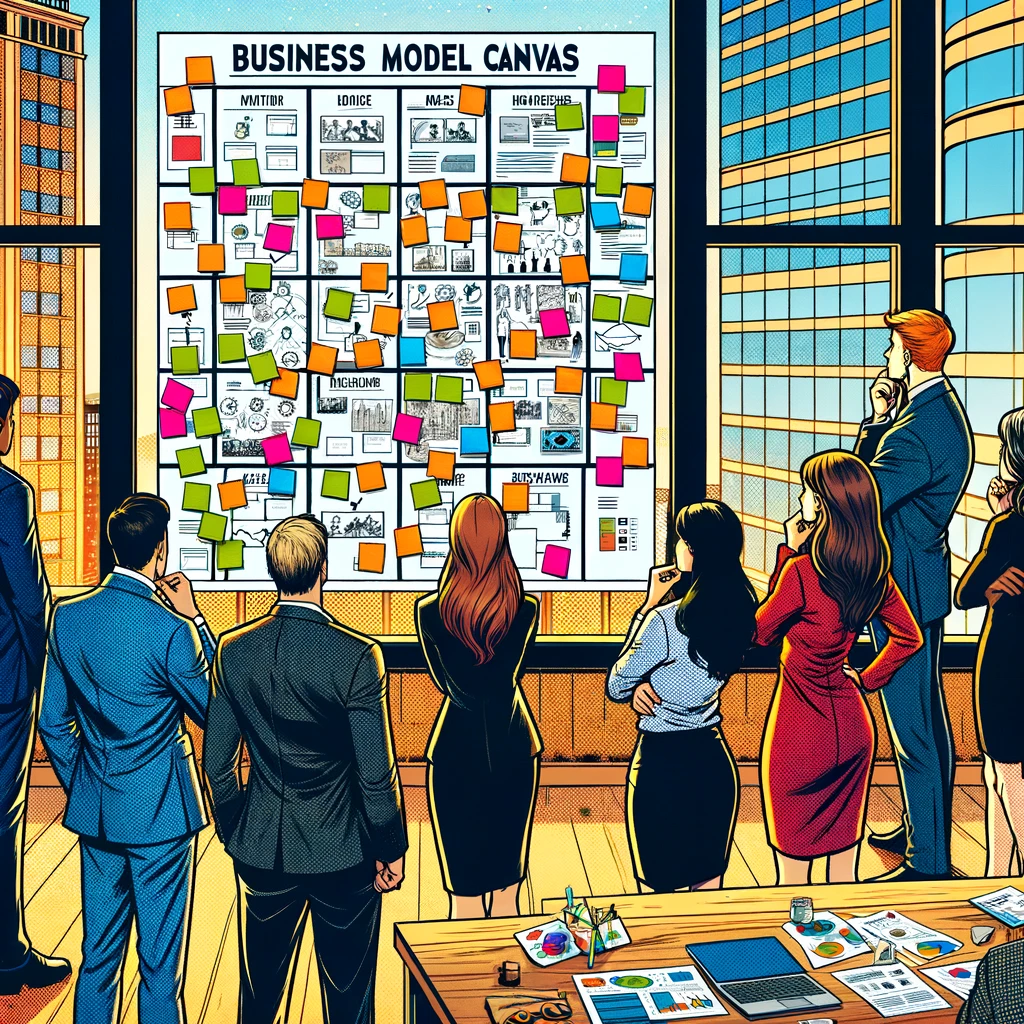Estimated reading time: 5 mins
The Business Model Canvas (BMC) is a strategic management template used for developing new business models and documenting existing ones. It offers a visual chart with elements describing a firm’s or product’s value proposition, infrastructure, customers, and finances. Created by Alexander Osterwalder, it has become a popular tool among entrepreneurs and business managers for its simplicity and effectiveness. I’ve used it several times, to great effect. However, despite its widespread use (and my personal positive anecdote), there are several reasons why relying solely on the BMC might not be the best approach for all businesses.

1. Oversimplification of Complex Business Models
One of the primary critiques of the Business Model Canvas is its tendency to oversimplify complex business structures. The BMC’s format, while user-friendly, might not capture the intricacies of certain businesses, particularly those operating in complex industries or with multiple product lines. By forcing all components of a business into pre-defined boxes, important nuances and interdependencies might be overlooked, leading to an incomplete or even misleading business model representation.
2. Business Model Canvas Lacks Focus on Competitive Analysis
The BMC provides little guidance in the area of competitive analysis. Understanding competitors and the market environment is crucial for any business strategy, but the BMC’s framework does not explicitly include these aspects. Without a clear focus on the competitive landscape, businesses risk developing a model that does not sufficiently consider external threats or market positioning.
3. Insufficient Emphasis on Implementation
Another limitation of the Business Model Canvas is its lack of focus on the implementation process. The BMC is primarily a planning tool, offering a snapshot of what a business model might look like but not delving into the specifics of how to execute that model effectively. Businesses might end up with a well-designed canvas that fails to translate into actionable steps or realistic strategies (which is errr… sort of its reason for existing).
4. Static Nature of the Business Model Canvas


The BMC is often criticized for its static nature. In today’s rapidly changing business environment, adaptability and flexibility are key. The BMC, however, presents a snapshot of the business model at a specific point in time and does not inherently account for dynamic market conditions or the need for iterative changes.
5. Limited Depth in Financial Analysis
While the BMC includes a cost structure and revenue streams, it doesn’t provide the depth of financial analysis often necessary for a comprehensive business plan. Critical financial details such as cash flow projections, break-even analysis, and detailed budgeting are not explicitly covered. This lack can lead to a superficial understanding of the business’s financial aspects.
6. Overemphasis on Product/Service Value Proposition
The BMC heavily focuses on the value proposition of a product or service. While this is undoubtedly important, this focus can sometimes overshadow other critical business aspects, such as customer relationship management, supply chain complexities, or operational challenges. This overemphasis can lead businesses to neglect other areas that are equally crucial for success.
7. Using the Business Model Canvas Risks “Template Thinking”
Using the BMC may lead to “template thinking,” where businesses become confined to the framework of the canvas. This can stifle creativity and innovation, as companies might become too focused on fitting their model into the template rather than thinking outside the box and developing unique strategies that set them apart from competitors.


8. Limited Guidance for New Entrepreneurs
For new entrepreneurs, the BMC can be somewhat daunting. Without a deep understanding of business concepts, filling out the canvas can be challenging and might lead to oversights or misinterpretations. The BMC doesn’t offer much guidance or instruction, which can be a significant hurdle for those new to business modeling.
9. Inadequate for Large or Diversified Corporations
The simplicity of the BMC, while a strength in some cases, can be a limitation for large or diversified corporations with multiple business units or complex organizational structures. Such entities may find the canvas too limiting to capture the full scope of their business operations, leading them to miss critical insights into their organization.
10. Assumes a Linear Path of Business Development
The BMC often implies a linear process of business development, from identifying customer segments to outlining revenue streams. However, business development is rarely linear in practice. Businesses often need to adapt, pivot, and revisit earlier stages of their development, something the BMC’s format does not easily accommodate.
11. Limited Room for Social and Ethical Considerations
Today’s businesses are increasingly expected to consider social and ethical implications. The BMC, however, provides limited room for these aspects. While it includes key partners and customer relationships, it doesn’t explicitly address a business’s broader impact on society, the environment, or ethical concerns.
12. Business Model Canvas Does Not Capture Human Element
The human element, including company culture, leadership, and employee engagement, plays a critical role in the success of a business. The BMC, however, is more focused on structural and strategic elements, overlooking the significance of the human factor in executing the business model successfully.


13. Reliance on Assumptions
Many parts of the BMC are based on assumptions about market behavior, customer needs, and business capabilities. While assumptions are an unavoidable part of planning, an over-reliance on them without adequate validation can lead businesses down a risky path. The BMC does not inherently encourage the testing or validation of these assumptions.
14. May Lead to Misaligned Business Strategies
There’s a risk that the concise nature of the BMC might lead to the oversimplification of strategies, causing misalignment with actual business goals and market realities. The canvas might present a coherent model, but one that doesn’t fully align with the company’s long-term vision or operational capacities.
15. Overlooked Importance of Storytelling
Finally, the BMC, while efficient, lacks the narrative aspect often crucial in engaging investors, partners, and even employees. The storytelling element of business planning is important in illustrating the vision and journey of a company, something that a one-page canvas might not adequately convey.


Business Model Canvas: Conclusion
While the Business Model Canvas is undoubtedly a valuable tool for conceptualizing business models, its limitations suggest that it should not be used in isolation. Businesses, especially those with complex structures or those operating in dynamic industries, should consider supplementing the BMC with more detailed analyses and strategies. Emphasizing adaptability, continuous validation, financial depth, competitive analysis, and the human element can lead to a more comprehensive and effective business strategy.
